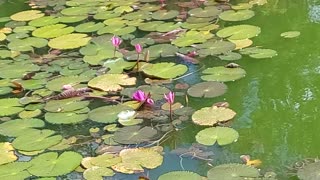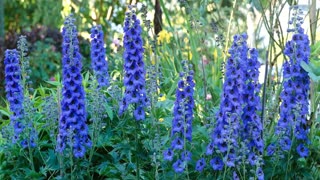Everything about the Water Lily
#waterlily #gordonlightfoot #circleofsteel
This video is dedicated to Gordon Lightfoot a Canadian folk singer who passed away in May 2023. The name of the song is Circle of Steel https://youtu.be/--QaFL_eXeM
The water lily, also known as the lotus, is a beautiful aquatic plant that belongs to the family Nymphaeaceae. It is known for its vibrant and fragrant flowers and lily pads that float on the water's surface. Here is everything you need to know about water lilies:
Habitat: Water lilies are primarily found in freshwater environments, such as ponds, lakes, and slow-moving rivers. They prefer calm waters with minimal wave action.
Types of Water Lilies: There are two main types of water lilies:
a. Hardy Water Lilies: These water lilies are well-adapted to colder climates and can survive freezing temperatures. They go dormant during the winter and regrow in the spring.
b. Tropical Water Lilies: These water lilies are native to tropical and subtropical regions and require warm temperatures to thrive. They do not tolerate freezing temperatures.
Plant Structure: Water lilies have several key features:
a. Leaves: The leaves of a water lily are round or oval-shaped and have a waxy coating that repels water. They typically float on the water's surface and are held above the water by long petioles.
b. Flowers: Water lilies produce beautiful flowers that come in a wide range of colors, including white, pink, yellow, and blue. The flowers are large, showy, and often fragrant. They have numerous petals and a central receptacle. Water lily flowers usually open during the day and close at night.
c. Roots: Water lilies have long, fleshy roots that anchor the plant in the mud or substrate at the bottom of the water body. The roots also absorb nutrients from the water.
Adaptations: Water lilies have several adaptations that allow them to survive and thrive in aquatic environments:
a. Air Spaces: The leaves and stems of water lilies have air spaces that provide buoyancy, allowing them to float on the water's surface.
b. Stomata: Water lily leaves have stomata on their upper surfaces, which enable gas exchange with the atmosphere.
c. Hydrophobic Coating: The waxy coating on the leaves of water lilies repels water, keeping them dry and preventing them from becoming waterlogged.
Ecology: Water lilies play an essential role in aquatic ecosystems. They provide shade and cover for fish, amphibians, and other aquatic organisms. The large leaves also help reduce sunlight penetration, which can inhibit the growth of algae and other unwanted aquatic plants.
Cultural Significance: Water lilies have cultural and symbolic significance in various cultures around the world. They are often associated with purity, enlightenment, rebirth, and spiritual growth. The lotus flower, a type of water lily, holds special religious and cultural significance in many Asian countries.
Uses: Water lilies are primarily grown for ornamental purposes in gardens, ponds, and water features. Some species of water lilies are also cultivated for their edible tubers, which are consumed in certain cuisines.
-
 10:42
10:42
asolitarypagan.com
1 year agoWater Lilly
45 -
 4:12
4:12
Garden Revelations
1 year agoDAYLILIES: A Beautiful, Low-Maintenance Garden Perennial (so many day lilies to choose from!)
28 -
 0:15
0:15
Joyance
3 years agoWater lily
28 -
 3:29
3:29
Bishop Aquatics
1 year ago $0.02 earnedWhy Pearl Weed Should Be In Every Aquarium
2.16K1 -
 1:30
1:30
WideOpenEats
3 years agoThe 10 Lush Bathroom Plants to Keep Your Space Bright and Cheery
54.2K1 -
 4:10
4:10
Garden Revelations
1 year agoGLADIOLUS: Sword Lily Adds Vertical Interest and Bold Color to Your Garden.
52 -
 9:15
9:15
Gardenvid
7 months agoLow water indoor plants | 20 indoor plants that don't need water for a month!
29 -
 3:30
3:30
Garden Revelations
1 year agoBLACK EYED SUSANS + BROWN EYED SUSANS: Delightful native wildflowers for the garden
129 -
 10:02
10:02
Respiratory Therapy Zone
2 years agoTop 10 Indoor Plants for Increasing Oxygen Levels 24/7 🪴
55 -
 7:17
7:17
GRETZSKIE
9 months agoListed below are the top ten largest flowers in the world.
13